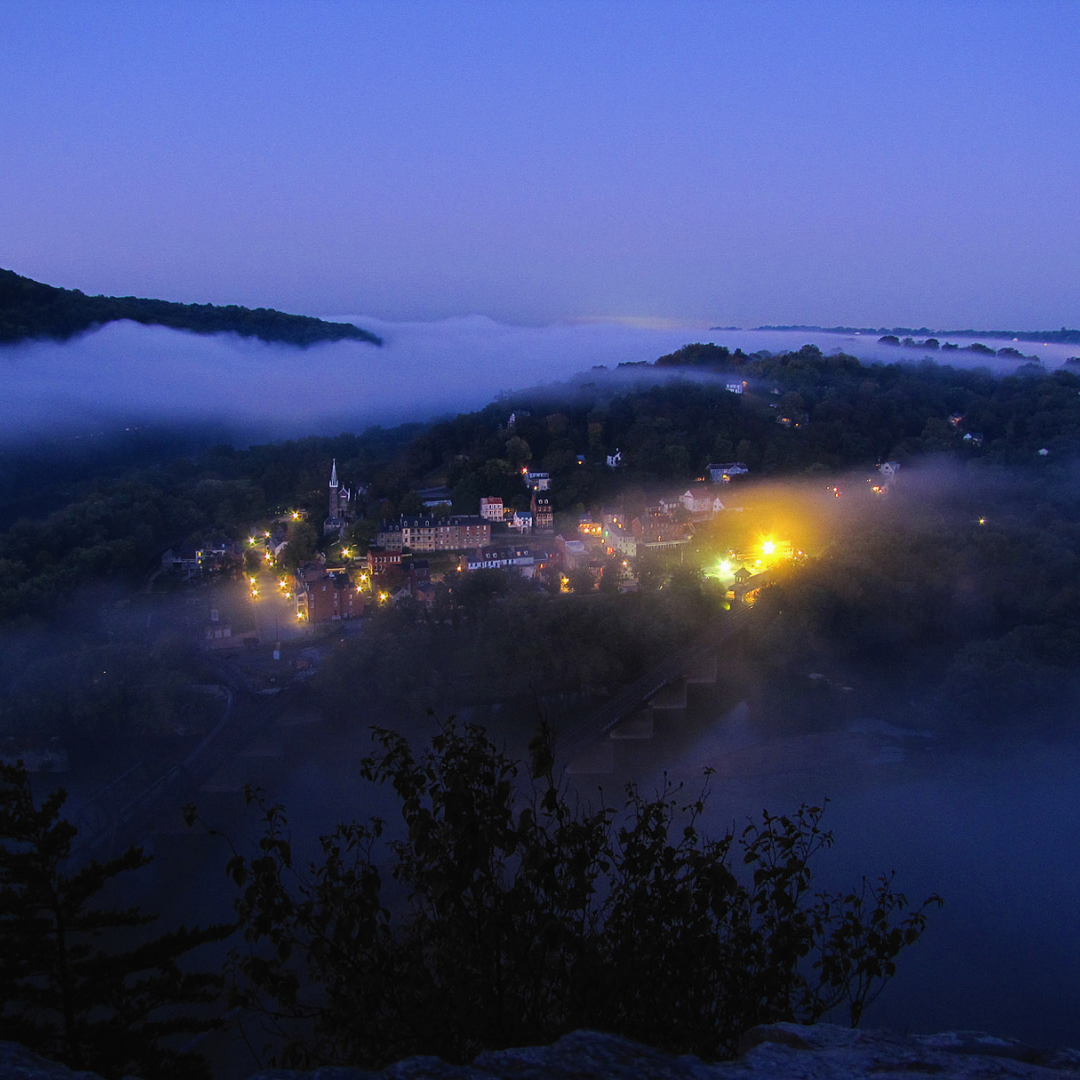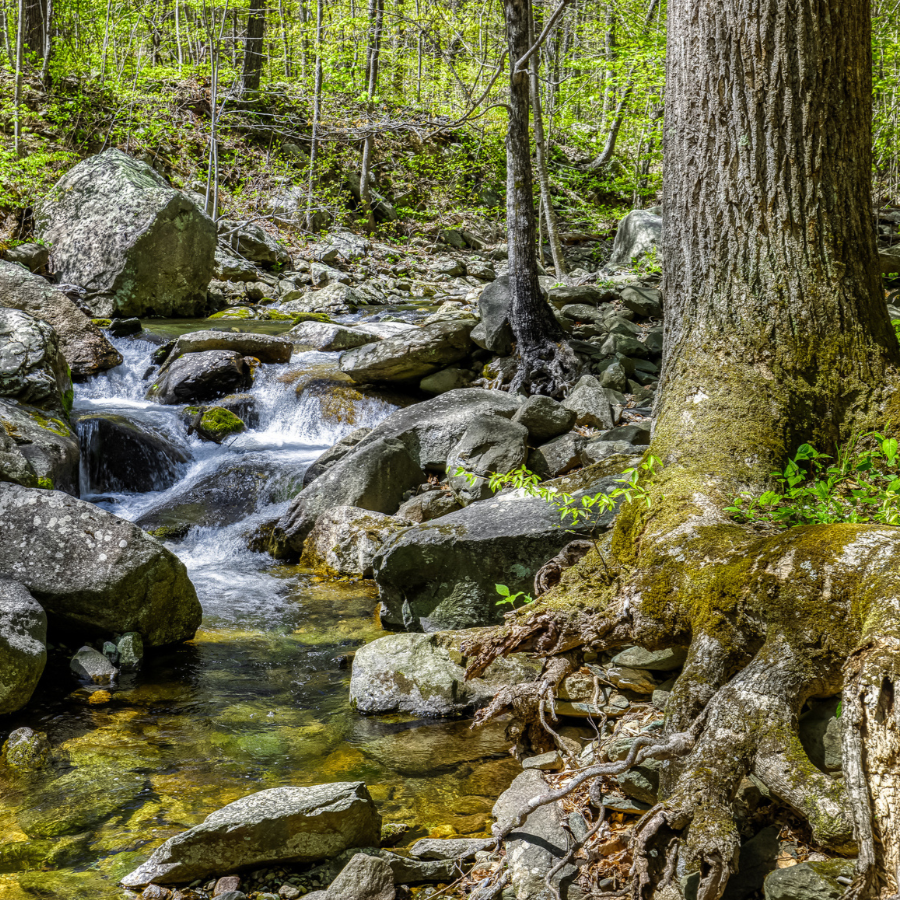5 ways trees are affected by the climate crisis – and how they help combat it
/Trees help protect our planet from a changing climate, so let’s join forces to protect trees
rosslyn, virginia, as seen from the gw memorial parkway.. photo by matthew benson via flickr (CC BY 2.0)
Trees and forests are at the forefront of the climate crisis.
Forced to contend with increasingly frequent droughts, wildfires, and severe storms, forests are profoundly affected by the warming planet. But, they are also one of the best ways to help combat the effects of a changing climate—locally as well as globally.
In the Potomac River region, the climate crisis is already altering weather patterns, causing heavier precipitation and higher seasonal temperatures. For instance, in Washington, DC, the hottest decade on record was from 2011 to 2019, and, according to projections, the capital area will experience even more extreme heat days in the coming decades.
Storms and other types of extreme weather—including droughts, hurricanes, and blizzards—are becoming more frequent as well. Biodiversity is being impacted too, as some species struggle to adapt to the area’s climatic shifts. And, throughout the Potomac River region, native woodlands are being affected too—facing droughts, extreme heat, and the encroachment of non-indigenous species—from the upland forests at the river’s headwaters to the transitional tidal forests typically found bordering low-lying marshlands.
a storm approaches the potomac river at colonial beach, va. photo by tom saunders via flickr (CC BY-NC-ND 2.0)
But, forests and trees are also a natural solution for reducing carbon dioxide emissions—the major offender responsible for 79% of all greenhouse gas emissions generated by humans in 2021. Through photosynthesis, trees sequester carbon dioxide from the atmosphere to make carbohydrates and oxygen, storing the captured carbon in their roots, trunks, and branches. However, while trees release greenhouse gases when they die and compose, they absorb a much greater amount of carbon dioxide from the atmosphere while they are living.
See below for more ways forests are being affected by the climate crisis—and helping to solve it!
Forests are the planet’s best carbon sink
photo by potomac conservancy
While the planet is losing trees at an alarming rate due to deforestation, wildfires, and climatic shifts, forests are still the best carbon sink. The world’s forests absorb approximately twice as much carbon as they emit, sequestering about 7.6 billion metric tons of carbon dioxide per year. In the United States, forests capture about 15% of the country’s carbon dioxide emissions—the equivalent of taking 163 million cars off the road.
Old-growth forests—like the century-old mixed hardwood forests shading Glencarlyn Park in Arlington, Virginia, or the stands of hemlock, sycamore, and tulip poplars spread along Bull Run in Fairfax County’s Hemlock Overlook Regional Park—are especially important. Because of their size, density, and lifespan, large trees can harbor more carbon than smaller plants. Mature trees also absorb and store more carbon than younger trees.
In cities, trees help battle heat – and contribute to environmental justice
a family resting on the u.s. capitol grounds. photo by josh via flickr (CC BY-ND 2.0)
City residents are especially vulnerable to intense heat—and the DMV is no exception. The number of days the heat index surpasses 95°F could double in the next few decades—and our region may experience 70 to 80 extreme heat days a year by 2050.
Cities are warmer than neighboring suburbs due to the pervasiveness of impermeable surfaces that trap and re-emit heat (like sidewalks, roads, buildings, and parking lots), a phenomenon referred to as the urban heat island effect. Temperatures within a city can vary greatly depending on the distribution of green spaces, making some neighborhoods more vulnerable to the impacts of extreme heat.
Trees, though, can have a huge impact. Trees and other vegetation can reduce both surface and air temperatures. In addition to generating shade, through a process known as evapotranspiration, trees also move moisture from the soil to the atmosphere—providing a dual cooling effect. In urban areas, trees and native vegetation also improve air quality by filtering pollutants and reducing energy usage, which decreases the need for air conditioning during the summer.
But, in many American cities, tree canopy isn’t equally distributed. Historically, a lending practice known as redlining—used by both the Home Owners’ Loan Corporation (HOLC) and the Federal Housing Administration (FHA)—zoned neighborhoods based on race and ethnicity, denying loans to communities of color. Meanwhile, white neighborhoods that were never redlined received investments that helped provide ecological amenities, like green spaces and trees.
Now, in the Potomac River region, many cities are working to improve tree equity, ensuring the distribution of canopy cover is more evenly spread. For instance, in Arlington, the Tree Canopy Equity Program aims to plant 2,500 trees over the next five years, focusing efforts on neighborhoods where canopy cover is sparse.
Warmer temperatures can bring pests, disease outbreaks, and species that did not evolve locally
wooly adelgid. photo by kerry wixter via flickr (CC BY-NC 2.0)
Changes in regional temperatures as a result of the global climate crisis can trigger a range of natural disturbances, including disease outbreaks and the arrival of pests.
Climatic shifts are also changing the range of some species—and sometimes spurring the arrival of species that did not evolve locally. Often, these invasive species are equipped with traits that help them adapt to new ecosystems, where they consume essential nutrients and sometimes outcompete locally evolved plants and animals.
In the Potomac River region, ecological communities and species equipped to cope with drier conditions, like chestnut oak, Virginia pine, and eastern red cedar, will thrive. At the same time, some species aren’t as well equipped to handle climatic shifts, like upland red spruce trees found at high elevations in the Blue Ridge and Allegheny Mountains.
Rising temperatures are causing forest-destroying pests to become more prevalent in the region, like the hemlock wooly adelgid. A sap-feeding insect originally from Asia, the pest first arrived in the eastern United States in the early 1950s and has destroyed hemlock communities throughout the southeastern United States. Since arriving in the Shenandoah National Park in 1951, HWA have reduced the park’s hemlock population from 800,000 trees to less than 40,000. In the East, warmer temperatures are now causing the insects to appear earlier in the year.
Wildfires are becoming more frequent and more intense
photo by gotovan via flickr (CC BY 2.0)
The climate crisis is making forest landscapes more susceptible to extreme wildfires. Specifically, warmer and drier conditions mean vegetation contains less moisture, making it more ignitable when exposed to heat. Additionally, the presence of dead trees and other vegetation (as a result of disease, drought, or pests) provides tinder for forest fires.
In the United States, wildfires already incinerate about 7 million acres of habitat a year—more than twice the amount that burned annually just three decades ago.
Although wildfires burn more land in the western United States, much of the country faces an increased fire risk as the planet continues to warm, and droughts become more intense.
Additionally, western wildfires are already affecting air quality in the eastern half of the United States. Recently, in early June, smoke generated by wildfires burning in eastern Canada worsened the air quality for millions of Americans throughout the East Coast, with New York City recording the worst air quality on the planet.
Trees help wildlife and humans adapt to the changing climate
photo by aaron maizlish via flickr (CC BY-NC 2.0)
In addition to removing carbon dioxide from the atmosphere, forests provide a host of other benefits that help humans and wildlife adapt to climate change. For instance, forests naturally absorb rainwater, help soak up excess runoff, and can prevent floods after intense storms.
Along the Potomac River, forests provide critical habitat for wildlife—and can help imperiled species adapt to rising temperatures.
The northern hardwood forests edging the headwaters of the Potomac River in West Virginia are especially biodiverse. And, as higher temperatures trigger a shift in the typical range of some plants and animals (like southern flying squirrels), these hardwood forests provide both an essential migration corridor and a swath of habitat.













